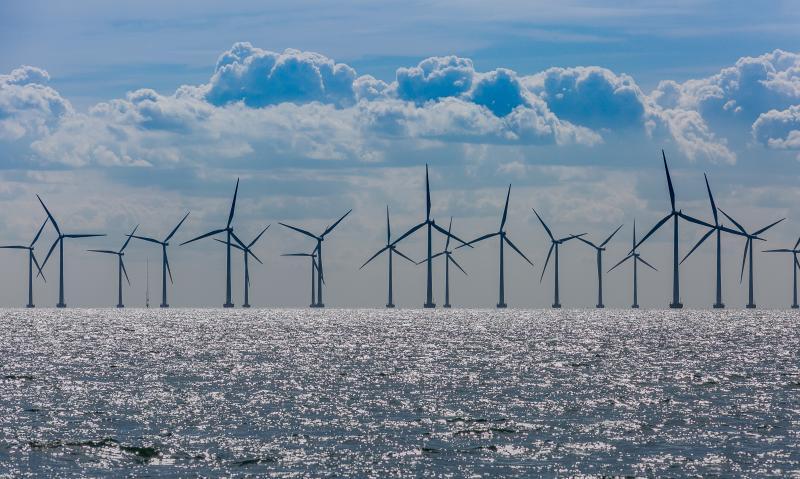We publish our Climate Bank Roadmap, outlining our bold ambitions for climate finance to back the European Green Deal and make Europe carbon-neutral
The European Investment Bank Group is tackling one of the biggest issues of our time. Our new roadmap outlines the next stages in the journey to sustainable investment and provides a framework to counter climate change and protect the environment during the critical decade ahead.
We have published a roadmap that points all our work in the right direction from 2021 to 2025. The EIB’s Board of Directors approved it on 11 November 2020.
“We’re transforming the way we do business,” says Stephen O'Driscoll, head of the Environment, Climate and Social Office at the European Investment Bank. “It’s a DNA change at the Bank, where we accelerate the transition through green finance and pull out all the stops to make the European Green Deal a success.”
The Bank has had an ambitious climate strategy in place since 2015. The idea of a new climate roadmap started about a year ago, after the European Council and EU countries asked the EIB Group to step up its work for the European Green Deal and help accelerate the move to a carbon-neutral continent by 2050.
The roadmap signals the urgency with which the European Investment Bank views the climate and environment crisis. It represents our commitment, as the EU’s climate bank, to align all our work with the Paris Agreement, support low-carbon technologies and resilience around the world, and help meet the United Nations’ Sustainable Development Goals. After all, climate change has no boundaries.

More finance tools and innovation in the Climate Bank Roadmap
The roadmap explains how we will meet these new commitments. Here are some of its most important elements:
- Increase EIB finance for climate action and environmental sustainability from about 30% today to at least 50% by 2025
- Align all new finance with the principles and goals of the Paris Agreement
- Support €1 trillion of investment in climate action and environmental sustainability from 2021 to 2030
- Build upon the commitment to stop supporting traditional fossil fuel energy projects
- Maintain leadership in the capital markets, where the EIB was the first institution to issue a green bond and is still the largest supranational green bond issuer
- Focus on clean energy, innovative technologies and digitalisation, which will play a major part in modernising and decarbonising industries
- Introduce new tools that draw on robust climate data to better understand climate risks
- Increase finance that helps societies adapt to climate change happening right now and makes economies more resilient to future problems
The roadmap outlines how we will direct more support to communities whose economies depend heavily on energy-intensive industries, such as coal mining or steel production. These regions will have the hardest time adjusting to the new green economy, and we do not want to leave anyone behind during the difficult transition.
The roadmap has a big social element. We are putting more resources into a “just transition” and social equality. We aim to offer more training, jobs and advisory services to people whose livelihoods are threatened by the transition to low-carbon economies and the impacts of climate change. We also will work on more development projects around the world to address these issues.
“When we think about livelihoods at risk from climate change impacts, we know that people living in developing countries, and especially the least-developed countries and small island states, often have the least financial resources to adapt," says Nancy Saich, the Bank’s chief climate change expert.
“More severe droughts and extreme weather events, sea level rises, biodiversity loss and other impacts – they are all increasing the risks to small businesses, to food and water supplies and ultimately making life more dangerous.”
The road to the Climate Bank Roadmap
During the 2015 UN Climate Conference in Paris, the European Investment Bank committed to finance $20 billion annually for the following five years towards the climate emergency. We are well on our way towards beating that goal. Since 2012, we have provided €170 billion of climate finance, which has supported over €600 billion for projects around Europe and the world to reduce emissions and help people adapt to climate change and biodiversity loss.
As we put more resources and expertise into the fight against climate change, we will seek to align our activities with the new EU Taxonomy, which establishes a classification system for sustainable green activities and makes sure everyone is on the same page for green investment. The EIB Group is a leader in calling for clear international guidelines to make sure green investment is the norm rather than the exception.
Every country will have to make big changes over the next decade. The Bank will keep working with new partners and extending its reach around the globe to meet its climate goals.
“There is no time to lose,” O’Driscoll says. “We are ready to work with everyone to tackle the difficult issues in front of us.